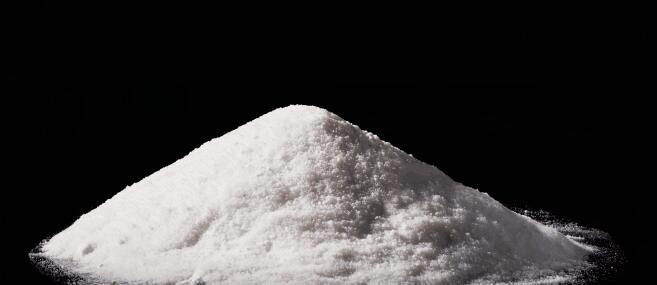
Non-metallic mineral fillers play an important role in modern polymer materials such as plastics, rubber, and coatings. Adding non-metallic mineral fillers to the polymer base material can not only reduce the cost of polymer materials, but more importantly, it can improve the performance and dimensional stability of the material, and endow the material with some special physical and chemical properties, such as compression resistance. , impact resistance, corrosion resistance, flame retardant, insulation, etc. Natural quartz stone, quartz sand and powdered quartz are important industrial mineral raw materials, which are widely used in glass, casting, building materials, ceramics, chemical industry, metallurgy, refractory materials, abrasives, fillers and other fields. Silica powder processed from quartz sand and its tailings, powdered quartz, etc., as a filler for plastics, rubber, coatings and other polymer materials, is more and more popular in ultrafine grinding, purification, modification and application. Pay attention to. In recent years, with the continuous progress of ultra-fine grinding technology, ultra-fine, ultra-pure, modified non-metallic mineral fillers have become more and more widely used.
Application of Microsilica Powder in Plastics
Silica powder can be used in polyvinyl chloride (PVC) flooring, polyethylene and polypropylene films, electrical insulation materials and other products in plastics.
The polyvinyl chloride floor tiles filled with microsilica powder can enhance the wear resistance of the product. In the PVC floor, the quartz powder with a fineness of 320 mesh and a filling amount of 160~180 parts can completely meet the requirements of the GB4085-83 standard. The surface of the floor has good smoothness and good scratch resistance.
In the PVC acid-resistant board pipe, when the filling amount of 400 mesh quartz powder is 10%~15%, compared with other fillers, the viscosity is low, the fluidity is good, the processing performance is improved, and it is beneficial to the extrusion and molding of the product. The acid resistance of the obtained acid-resistant plate tube is significantly improved.
Microsilica filled polyethylene (PE) agricultural film with large specific surface area (above 600 mesh) and high activity can improve the physical, chemical and optical properties of the product, and filled polypropylene can improve the mechanical properties of the product.
In the preparation of epoxy film plastics, the amount of silicon micropowder accounts for 50% to 70% of the molding compound. This plastic is a good new packaging material for low-voltage electrical appliances such as electromagnets for packaging valves.
Application of microsilica powder in rubber
In order to improve the physical and mechanical properties of rubber products and prolong the service life of rubber products, two methods are generally adopted: one is to embed skeleton materials in rubber products, such as fiber textile materials or metal materials; the other is to add Various fillers.
Silica powder as a rubber reinforcing material has the following forms:
(1) Powdered quartz. It is mainly made of natural diatomite, which is crushed, calcined at high temperature, and removed from organic impurities. It can be used in rubber to make rubber firm, reduce the density of the rubber material, and increase the thermal insulation performance. It is suitable for the manufacture of insulating rubber materials and model products. And foam products, used for hard rubber can increase the softening temperature.
(2) Silica powder. The silica content is 75%~79%. The natural minerals are mined, dried, crushed and sieved. It can be used for rubber hoses, tapes and other rubber products. The filling compound is easy to mix and has good dispersibility, and can be filled in high quantities. , the surface of its calendered products is smooth, the strength and elongation of the vulcanized rubber is close to that of clay, and is equivalent to that of light calcium; the adhesion strength and permanent deformation at break are better than that of clay, and the wear resistance and elasticity are better than that of clay and light calcium; the aging performance is good, The price is lower than clay and light calcium.
(3) Quartz powder. Quartz powder has different types such as amorphous and microcrystalline, and is processed by crushing natural minerals.
Application in coating industry
In the coating industry, the particle size, whiteness, hardness, suspension, dispersibility, low oil absorption and high resistivity of microsilica powder can improve the corrosion resistance, wear resistance, insulation and high temperature resistance of coatings. Microsilica used in coatings has always played an important role in coating fillers due to its good stability. Especially for exterior wall coatings, SiO2 raw materials play a decisive role in weather resistance. With the increasing prosperity of the construction market, the paint industry has also developed rapidly. In 2000, the output of paint in my country reached 1.8394 million tons, an increase of 7.42% over 1999, and the output of architectural paint reached 563,200 tons, an increase of 9.95%.
Therefore, the amount of silica powder also increases, and at the same time, higher requirements are put forward for the ultrafine and modified silica powder. Bai Wenkui added silicon micropowder to the patented super exterior wall wiper paint, which has good effect of exterior wall decoration, erosion resistance and low cost. At the same time, the research and application of nano-SiO2 has attracted more and more attention. For example, Zhejiang Tomorrow Nano Engineering Research Center has carried out the application of nano-SiO2 in coatings to improve aging resistance. The amount of silica powder has also increased, and at the same time, higher requirements have been put forward for the ultrafine and modified silica powder. Bai Wenkui added silicon micropowder to the patented super exterior wall wiper paint, which has good effect of exterior wall decoration, erosion resistance and low cost. At the same time, the research and application of nano-SiO2 has attracted more and more attention. For example, Zhejiang Tomorrow Nano Engineering Research Center has carried out the application of nano-SiO2 in coatings to improve aging resistance.
